|
|
What is Rotary?
Rotary is an organization of business and
professional people united worldwide to conduct
humanitarian service, encourage high ethical
standards in all vocations, and help build goodwill
and peace in the world. This is exemplified in
our mottoes, “Service Above Self” and “He
Profits Most Who Serves Best.”
|

|
| The Rotary Club of
Batasan Hills (Club ID No. 31159) was admitted to
Rotary International on 13 December 1995 under the
governorship of Rotary International District 3780
with Ben Sison as Charter President.
The members of the Rotary Club of Batasan Hills (RCBH),
part of approximately 29,000 rotarians in 159
countries and 35 geographical areas, extend to you a
cordial welcome to take an active part in the
service and fellowship activities of this club.
|
|
| |
The Rotary Emblems
The Rotary emblem identifies Rotarians around the
world. The gearwheel signifies that the Rotarian is
a “worker” when it comes to serving others.
To the right are the RI Emblem, the District 3780
emblem and the RCBH Logo
|

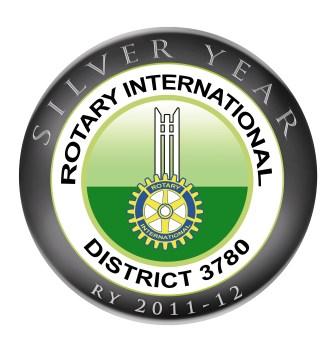
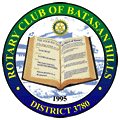
|
|
|
[Go
to Top]
|
A Bit of History
Rotary was born in Chicago, Illinois, U.S.A., on
23 February 1905. Its founder was Paul P. Harris, an
attorney. On that day, Paul met with three friends
— Silvester Schiele, a coal dealer; Gustavus E.
Loehr, amining engineer; and Hiram E. Shorey, a
merchant tailor inside Room 71 of the Unity
Building. Paul’s idea was to promote fellowship
among business acquaintances.
Because the men met in rotation at each other’s
places of business, their club took the name Rotary.
To make the club a representative cross-section of
the business and professional community, only one
representative of each business or profession was
admitted. This was the beginning of the
classification principle of membership.
|
 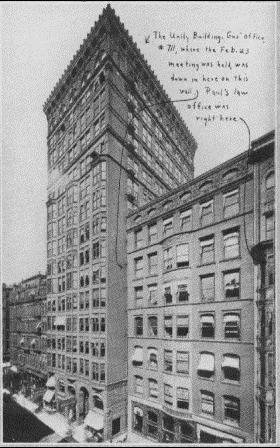 |
Historical
Highlights:
1905 First Rotary club formed in Chicago,
Illinois, U.S.A.
1910 First Rotary Convention held in Chicago; first
club outside U.S.A. formed in Winnipeg, Manitoba,
Canada
1911 First European clubs formed, in Dublin,
Ireland; Belfast, Northern Ireland; and London,
England
1917 Endowment fund, forerunner of The Rotary
Foundation, established
1919 Rotary enters South America and Asia with clubs
in Montevideo, Uruguay, and Manila, Philippines
1921 Rotary goes “down under” with clubs in
Melbourne, Australia, and Johannesburg, South Africa
1933 The 4-Way Test formulated by Rotarian Herbert
J. Taylor
1947 Rotary Founder Paul Harris dies; first Rotary
Foundation scholarships awarded
1978 Tokyo convention, RI’s largest ever, with
39,834 registrants
1985 Rotary announces PolioPlus program to immunize
all children against polio
1989 Council on Legislation opens Rotary to women
1997 Rotary expands to Antarctica with chartering of
club at Base Marambio
|
|
|
[Go
to Top]
|
Avenues of Service and
Object of Rotary
While the original basis of Rotary was fellowship,
service to others soon became its hallmark. Each club
determines its own service activities, which it channels
through four “Avenues of Service” — Club Service,
Vocational Service, Community Service, and International
Service.
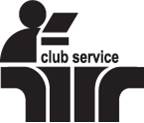
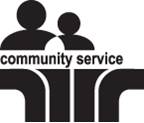
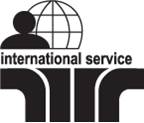

Each avenue has an overall committee. Most of these
committees have subcommittees that focus on specific areas
of that avenue. These avenues are explained in detail in the
Rotary Basic Library. You will have the opportunity to serve
in one or more of these committees. You need not wait to be
asked – you may volunteer at any time. If you are shy,
don’t worry, we will assign you somewhere. Every member of
the club serves on at least one committee.
The avenues are based on the four-part Object of Rotary.
The object of Rotary is to encourage and foster the ideal of
service as a basis of worthy enterprise and in particular,
to encourage and foster:
- the development of acquaintance as an opportunity for
service,
- the high ethical standards in business and
professions, the worthiness of all useful occupations
and the dignifying of each Rotarian’s occupation as an
opportunity to serve society,
- the application of the ideal of service in each
Rotarian’s personal, business and community life, and
- the advancement of international understanding,
goodwill and peace through a world fellowship of
business and professional persons united in the ideal of
service.
|
|
[Go
to Top]
|
The Four Way Test
The second avenue of service is vocational. Its purpose
is the application of the service ideal to business life and
to the instilling of high ethical standards in business. The
Four Way Test was developed by Herbert Taylor in 1932 as an
operating tool in his company to inspire honesty and
integrity. Rotary adopted the test as a hallmark of its
vocational emphasis. It is a test of the things we think,
say or do:
- Is it the truth?
- Is it fair to all concerned?
- Will it build goodwill and better friendships?
- Will it be beneficial to all concerned?
If we abide by this test in whatever we do in our
personal lives and in our chosen vocations, we will be well
on the way to leading productive lives that are sensitive to
the needs and feelings of others. You are now a member of an
organization that is attempting every day to raise the
standard of conduct between human beings. We are very
serious about this code of conduct and enlist your support
in this endeavour.
|
|
[Go
to Top]
|
How One Becomes a
Member
Membership in Rotary is by invitation only. One
member will nominate a person if he / she is
considered to be an outstanding representative of
his / her vocation in the community. The
proposed membership will be reviewed by the
Membership Committee. The Classification Committee
will determine the availability of a membership slot
in the potential member's classification. The Board
of Directors will confirm the proposed membership
and all club members will be informed. Rotary
cannot be likened to a country club or fraternal
lodge. There are responsibilities and opportunities
far beyond those of simply “belonging” and
occasionally attending luncheons with a congenial
group of individuals.
|
 |
|
|
[Go
to Top]
|
Types of Membership
There are only two types of membership in Rotary –
active and honourary.
An active member is one who is active in his/her work
life or retired from being engaged as a proprietor, partner,
corporate officer, manager or an executive position with
discretionary authority in his or her business of
profession. Active membership is limited to 5 members (or
10% of our total membership) from each classification of
business or profession except in three unlimited areas:
media, religion and diplomatic service.
An honorary member is a person who has been elected to
membership on an annual basis due to distinquished service
in the furtherance of Rotary ideals.
Classifications
A member holds a classification which is the word or phrase
that describes the principal and recognized activity of the
firm, company, or institution with which he or she is
connected, or that describes his or her principal and
recognized business or professional activity.
Your classification is considered on loan to you for as long
as you are a member of the club. Represent it well. Should
your business change, your classification will also change.
The purpose of the classification system is to create a
membership that is diverse and representative of the
community from which the membership is drawn.
A classification guide is in use at Rotary, click here to
know more-  . .
|
|
[Go
to Top]
|
Service in Rotary
The motto of Rotary is Service Above Self. Service is what
Rotary is all about. The phrase above self means exactly
that – Rotarians put service ahead of their own interests.
It means we serve even when it is inconvenient or costly.
Although some outsiders may believe Rotary is a club for
business, in fact it is a club made up of business and
professional people who strive to find effective ways to
provide service in the four avenues of service.
As a Rotarian you will enjoy the company of others in your
own community and the pleasure of working with them for the
good of your community and of the world.
|
|
[Go
to Top]
|
Rotary Programs
Rotary International encourages clubs to focus their
Community Service activities in certain areas. Areas of
emphasis include combating hunger and violence, promoting
literacy, preventing drug abuse and AIDS, meeting the needs
of children, helping the elderly, and protecting the
environment (a program known as Preserve Planet Earth —
PPE).
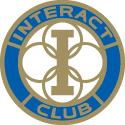 |
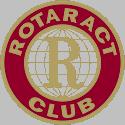 |
 |
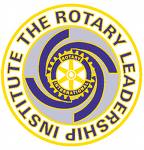 |
| INTERACT |
ROTARACT |
RYLA |
RLI |
 |
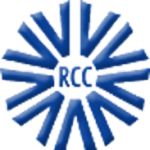 |
 |
 |
 |
 |
 |
| PPE |
RCC |
RV |
RYE |
WCS |
RFE |
RRVF |
Rotary International programs such as World Community
Service (WCS), Rotary Community Corps (RCC) and Rotary
Volunteers (RV) link communities needing help with Rotary
clubs and individuals willing to provide assistance. Popular
RI programs for youth and young adults include Interact and
Rotaract service clubs, Rotary Youth Exchange (RYE), and
Rotary Youth Leadership Awards (RYLA). Friendship
Exchange(RFE) and Rotary Recreational and Vocational
Fellowships are still other ways Rotarians nurture global
fellowship.
|
|
[Go
to Top]
|
| The Rotary Foundation
The Rotary Foundation is one of the largest public
charity in the world. It was established in 1917 and is
managed by Rotary International at Evanston, IL.
The purpose of the Foundation is to further the fourth
object of Rotary – to advance international understanding,
goodwill, and peace. Rotarians and Rotary clubs
provide the bulk of the financial support for the
Foundation.
The Rotary Foundation provides humanitarian grants
worldwide through innovative programs. The best-known
program is PolioPlus, Rotary’s ambitious program to help
achieve the global eradication of polio. Other major
initiatives include 3-H (Health, Hunger and Humanity)
Grants, Matching Grants, and Peace programs.
The Rotary Foundation’s oldest educational program is
Rotary Ambassadorial Scholarships, the world’s largest
privately funded scholarship program. The Foundation also
awards Grants for University Teachers to teach in
less-developed nations and enables international exchanges
of business and professional people through Group Study
Exchange
Contributions to the Foundation are recognized on several
levels.
- Paul Harris Sustaining Member – An individual who
makes an initial contribution of a minimum of US$100.00
and intends to make similar contributions annually, is
recognized as a sustaining member.
- Paul Harris Fellowship – An individual who
contributes, or in whose name is contributed, the amount
of US$1,000.00 is recognized as a Paul Harris Fellow.
- Sapphire – After donating the initial US$1,000.00 to
the Foundation, many Rotarians continue to select the
Foundation as their charity of choice. The Foundation
issues a pin which contains a sapphire for each
additional US$1,000.00 contributed, as recognition of
this effort. This pin can contain five sapphires.
- Ruby - Contributions beyond the US$6,000.00 level are
recognized with rubies for each additional US$1,000.00.
Foundation funds collected in year one are not spent
until year three. This investment period pays for the
complete operation of the fund as well as allows time to
plan appropriate expenditures. Thus, every dollar
donated to the Foundation is actually expended on real
projects.
Rotary Foundation Permanent Fund

A permanent fund was established in 1982. Funds
contributed to the Permanent Fund are held in perpetuity and
only the income is spent on projects. This allows a donation
to produce income forever. Income from the Permanent
Fund helps to support the general programs of Rotary.
Contributions to the Foundation’s Permanent Fund are
recognized through the Benefactor recognition program. A
contribution of US$1,000.00 to this fund allows the donor or
the designate to be recognized as a Benefactor. A gift may
be made in cash or through one’s will, with formal
notification to the Foundation. Beginning in 2000, a
person can bequest US$10,000.00 or more to become a member
of the Bequest Society.
|
|
[Go
to Top]
|
How Rotary is Organized
Clubs
Rotarians are members of more than 32,000 Rotary clubs,
which belong to the global association of Rotary
International (RI). Each club elects its own officers and
enjoys considerable autonomy within the framework of
Rotary’s constitution and bylaws.
Districts
Clubs are grouped into approximately 530 RI districts, each
led by a district governor, who is an RI officer and leads
about 50 clubs. The district administration, including
assistant governors and various committees, guides and
supports the clubs.
Zones
For identification purposes, Districts are grouped into
zones. There are no distinctive leadership structure
in a zone.
The RI Boards
The 19-member RI Board of Directors , which includes the RI
president and president-elect, meets quarterly to establish
policies. Traditionally, the RI president, who is elected
annually, develops a theme and emphasis for the year.
The Secretariat
RI is headquartered in Evanston, Illinois, USA, with seven
international offices in Argentina, Australia, Brazil,
India, Japan, Korea, and Switzerland. The office of Rotary
International in Great Britain and Ireland (RIBI), located
in England, serves clubs and districts in that region.
The Secretariat’s active managing officer is the general
secretary, who heads a 650-member staff working to serve
Rotarians worldwide. Contact the Secretariat .
Council on Legislation
The Council on Legislation, Rotary’s “parliament,”
meets every three years to deliberate and act upon all
proposed enactments and resolutions submitted by clubs,
district conferences, the RIBI Conference or General
Council, and the RI Board. The Council itself also makes
proposals. Read more about the Council on Legislation .
The Trustees of The Rotary Foundation
The 15 directors of The Rotary Foundation are appointed by
the RI president, with the agreement of the RI Board. The
Trustees manage all business of the Foundation. The trustee
chair, who serves for one year as chair, is the head of the
Trustees. Each trustee is appointed to a four-year term.
The World Headquarters of Rotary International is located
in Evanston, Illinois, U.S.A., a suburb of Chicago. It has
an international staff, headed by the General Secretary.
Service centers also are located in Parramatta, Australia; São
Paulo, Brazil; Delhi, India; Tokyo, Japan; Zürich,
Switzerland; Buenos Aires, Argentina; Seoul, Korea; and
Manila, Philippines.
|
|
[Go
to Top]
|
| Attendance
Rotary does not want knife and fork members or what we
call RINOs (Rotarians In Name Only). We want you to
participate. When you participate, our club is more
effective. When you do not participate, our club is
weakened.
One of the measures of participation is attendance at
regular meetings. In Rotary, attendance is required.
Without regular attendance, you do not learn about your club
activities and you do not come to know your fellow club
members. You are important to Rotary, or we would not have
elected you to membership. How important Rotary is to you
will be shown by your attendance record.
The standard club consititution requires that a member
must attend at least 60% of the meetings in each six month
period of the Rotary year. Half of these must be at your
home club.
Make-ups
Occasionally business, travel, or illness will prevent
your attendance. You have the privilege to complete a
make-up by attending a meeting of another Rotary club
anywhere in the world. You have thirteen days prior to the
regular meeting or thirteen days after the regular club
meeting, in which to complete a make-up. It is your
responsibility to advise the secretary of any make-ups you
have. Make-up slips from the club you visited are no longer
required.
Make-ups are one of the fun privileges in Rotary. You are
warmly welcomed by a group that knows nothing about you
except you are a Rotarian like them. The friendship they
extend to you will explain again what we mean by fellowship.
In Rotary, a stranger is a friend you have not met before.
Make-ups can be done at clubs in neighbouring areas or
anywhere in the world. Foreign make-ups can be a highlight
of your Rotary life. Our secretary has a directory which
indicates when and where every club in the world meets.
Attendance credit is also earned for attending district
conferences, assemblies, conventions, special meetings by
the District Governor, Board meetings, and work projects. We
also greet Rotarians from around the world at our club
meetings. Be friendly, invite visitors to join your table,
involve them in your conversations and make them want to
come visit us again.
Conferences, Assemblies and Conventions
One of the duties of the District Governor is to organize
the district conference. This is a three day event held in
late spring or early summer and usually convened in the
District Governor’s home town. Its purpose is information,
inspiration and fellowship. All members of the district are
urged to attend and to bring their spouses.
The district also sponsors an assembly each spring. Its
purpose differs from that of the conference in that the
purpose of the assembly is to provide practical, how-to
information on various Rotary subjects; as well as training
incoming officers of the clubs. The program lasts from four
to six hours and is free. All members who wish to improve
their knowledge of Rotary should attend.
RI annually holds the International Convention for
Rotarians from all over the world. Attendance at these
conventions leaves every Rotarian with the certain knowledge
that internationality of Rotary is very real. Every Rotarian
should attend at least one international convention is his
or her Rotary career.
|
|
[Go
to Top]
|
| Participation
Four areas of participation are mandatory.
- Attend club meetings, as discussed above.
- Serve on at least one committee.
- We are a service club and we need more members to
serve. OBTAINING NEW MEMBERS IS EVERYONE’S JOB IN
ROTARY.
- Fund raising. Every member is obligated to do his or
her share to raise funds, no matter what the project is.
|
|
[Go
to Top]
|
Admission Fees, Dues &
Other Costs
Admission (one time)
Annual Dues
Meal Dues during Meetings
In addition to admission fees, dues, and meal costs,
there are other costs to your membership. You will be
expected to participate fully in fund-raising activities.
Usually they are structured so that we obtain funding from
sources outside the club by soliciting or selling. Also,
from time to time, we may ask your company to support our
activities by donating some product or service.
Occasionally, there will be club social functions which may
require extra expenditure. Finally, we expect your time.
That is probably your most precious possession. We promise
to use it well.
The treasurer maintains a ledger for each member, and you
are expected to pay your ledger account on a monthly basis.
A portion of your annual dues goes to District and
International to pay for their respective administrative
overhead. The balance pays for all club overhead.
|
|
[Go
to Top]
|
| Pin & Badge
You should always wear your Rotary lapel pin. You will be
surprised at the number of people who will greet you upon
recognizing the pin. At our club meetings you are expected
to wear your badge, so that visitors to the club will know
who you are.
Business Relationships
Rotarians are banded together for the purpose of doing
service. We are not banded together as a business network.
It is understood that Rotarians do business with each other,
presumably because it is natural to do business with those
you know and trust and who adhere to the business ethics
espoused by Rotary.
Biography
Members’ biographies are a frequent program at club
meetings. As a new member, you will be asked to address the
club for five to fifteen minutes to describe your
classification and to tell us something of your personal
background, so we can get to know you.
Programs
Each week we strive to present a program on an
interesting topic. We like to learn more about new business
ventures and what is going on in our community and region.
Seek out good speakers that may be of interest to your
fellow Rotarians.
|
|
[Go
to Top]
|
| Getting started together
Because Rotary often involves private family time, as
well as time away from business, it is important for family
members to know about Rotary. Sharing this brochure with
them may be the first step. The ways that family members can
be involved in Rotary work vary from club to club and
country to country. The way they choose to be involved also
varies. For example, in some communities Rotary spouses
associate together to support the service activities of the
local club; their associations are independent of Rotary
International. A number of exciting RI programs are open to
either spouses or children of Rotarians, including Youth
Exchange, Rotary Recreational and Vocational Fellowships,
Rotary Friendship Exchange, and Pre- and Post-Convention
Homestay. However, family members are ineligible to
participate in some programs, for example, Foundation
scholarships.
Here are some suggestions for including your family
members in the world of Rotary:
- Introduce family members to Rotarians as you meet them
in any circumstance.
- Invite family members to a Rotary club meeting.
- Tell your family about various projects and activities
of your club.
- Invite to your home or to a social activity Rotary
Youth Exchange students or Rotary Ambassadorial Scholars
sponsored or hosted by your club or district.
- Include your family members in all appropriate
activities, such as social events and various service
activities.
- Encourage your spouse — and children, when permitted
and appropriate — to attend the district conference,
regional conferences, and the Rotary International
Convention.
- Encourage your sons or daughters of the appropriate
age to consider joining Interact (for ages 14-18) or
Rotaract (for ages 18-30).
|
|